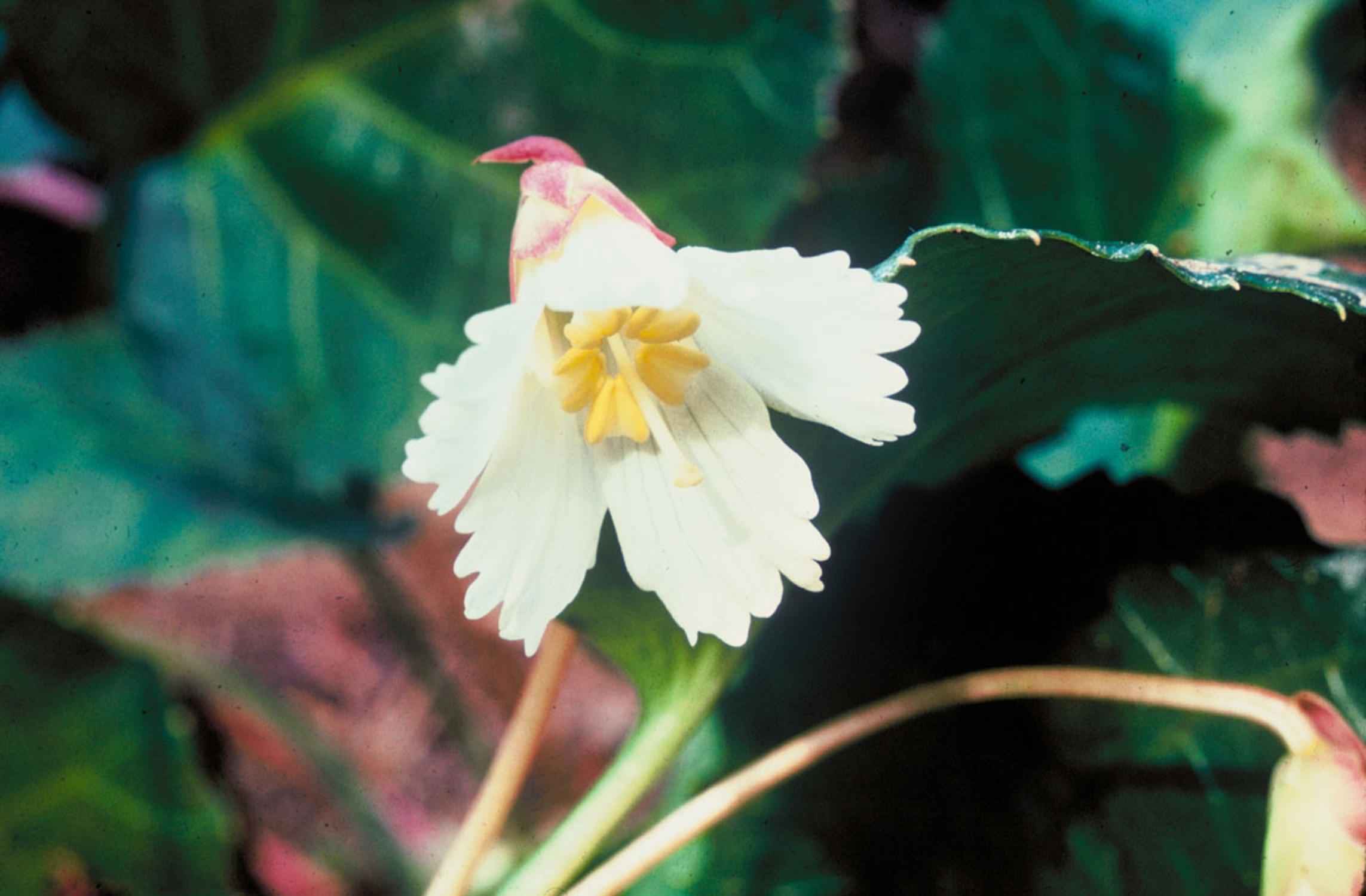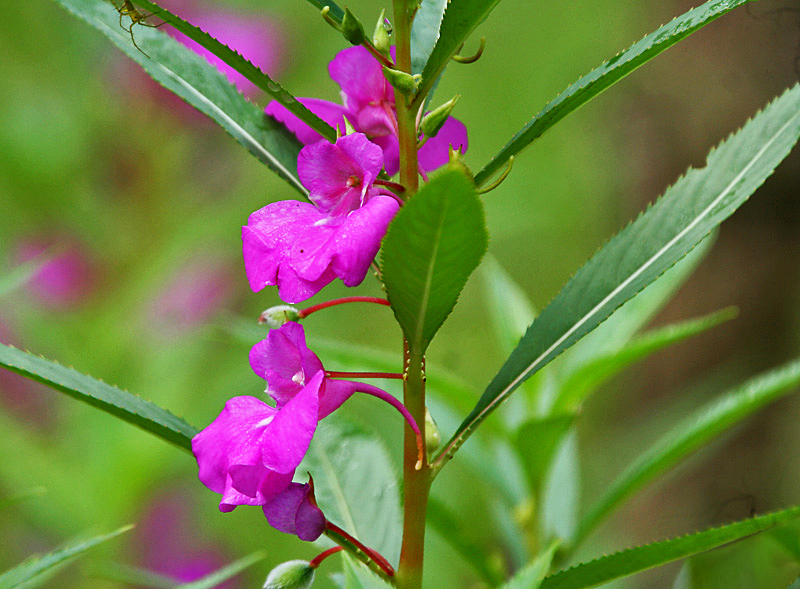|
Diapensiaceae
Diapensiaceae is a small family of flowering plants, which includes 15 species in 6 genera. The genera include '' Berneuxia'' Decne. (1 species), '' Diapensia'' L. (5 species), '' Galax'' Sims (1 species), '' Pyxidanthera'' Michx. (2 species), '' Shortia'' Torr. & A.Gray (4 species), and '' Schizocodon'' Siebold & Zucc. (2 species). Members of this family have little economic importance; however, some members are cultivated by florists. Taxonomy Past literature classified Diapensiaceae as an old family, without defining the meaning of old. The name '' Diapensia'' was given to ''Diapensia lapponica'' by Linnaeus. Previously, it was the Greek name of sanicle. The family, originally including only ''Diapensia lapponica'', was named by Heinrich Friedrich Link in 1829. Concerning the interrelationships in Diapensiaceae, debate still remains regarding the recognition of ''Schizocodon'' and whether it should be separate from ''Shortia''. However, recent molecular studies support the s ... [...More Info...] [...Related Items...] OR: [Wikipedia] [Google] [Baidu] |
Pyxidanthera
''Pyxidanthera'' is a genus of flowering plant in the family Diapensiaceae. Though often recognized as two species, ''Pyxidanthera barbulata'' and ''Pyxidanthera brevifolia'', these designations are not genetically or morphologically distinct. Furthermore, these two designated species were found to not be reciprocally monophyletic.Rönblom, K. and A. A. Anderberg. (2002)Phylogeny of Diapensiaceae based on molecular data and morphology. ''Systematic Botany'' 27(2) 383-95./ref> Despite these findings, some flora still recognize these two species based on their range, habitat, and leaf morphology (size and pubescence). However, these leaf morphology differences are directly related to habitat and moisture. Despite the species designations being based on habitat and moisture, climatic niche differentiation is not found between the two species. Therefore, these species designations are strictly based on range, despite the overlapping range of the two species. The most widespread speci ... [...More Info...] [...Related Items...] OR: [Wikipedia] [Google] [Baidu] |
Shortia
''Shortia'' is a small genus of subshrubs or perennial herbs in the family Diapensiaceae. There are five species, four in Asia and one in the Appalachian Mountains of eastern North America. They are found in mountainous areas, generally from elevation. All have restricted ranges and are generally considered rare. Three of the species, ''S. galacifolia'', ''S. soldanelloides'', and ''S. uniflora'' are often cultivated. The genus was by Asa Gray named after botanist Charles Wilkins Short. In Gray's diary entry for April 8, 1839, he named the genus after Charles Wilkins Short Charles Wilkins Short (October 6, 1794 – March 7, 1863) was an American botanist. He primarily worked in the state of Kentucky. Short discovered several species of plants and has six species of plants named after him. He attended Transylvania Un ... because the plant was native to America in a region close to where Short lived, which was Kentucky. Short and Gray never met but they corresponded with one anot ... [...More Info...] [...Related Items...] OR: [Wikipedia] [Google] [Baidu] |
Diapensia
''Diapensia'' is a genus of flowering plants of the family Diapensiaceae. Most of the species are found in the Himalayas. ''Diapensia lapponica'' has a high Arctic, circumpolar distribution. Species The following species are recognised in the genus ''Diapensia'': *'' Diapensia albida'' (W.E.Evans) J.F.Ye *'' Diapensia himalaica'' Hook.f. & Thomson *''Diapensia lapponica'' L. *'' Diapensia obovata '' (F.Schmidt) Nakai *''Diapensia purpurea ''Diapensia'' is a genus of flowering plants of the family Diapensiaceae. Most of the species are found in the Himalayas. ''Diapensia lapponica'' has a high Arctic, circumpolar distribution. Species The following species are recognised in the ...'' Diels *'' Diapensia wardii'' W.E.Evans References {{Taxonbar, from=Q7179462 Diapensiaceae Taxa named by Carl Linnaeus Ericales genera ... [...More Info...] [...Related Items...] OR: [Wikipedia] [Google] [Baidu] |
Ericales
The Ericales are a large and diverse order of flowering plants in the asterid group of the eudicots. Well-known and economically important members of this order include tea and ornamental camellias, persimmon, ebony, blueberry, cranberry, lingonberry, huckleberry, kiwifruit, Brazil nut, argan, sapote, azaleas and rhododendrons, heather, heath, impatiens, phlox, Jacob's ladder, primroses, cyclamens, shea, sapodilla, pouterias, and trumpet pitchers. The order includes 22 families, according to the APG IV system of classification. The Ericales include trees, bushes, lianas, and herbaceous plants. Together with ordinary autophytic plants, they include chlorophyll-deficient mycoheterotrophic plants (e.g., '' Sarcodes sanguinea'') and carnivorous plants (e.g., genus '' Sarracenia''). Mycorrhizal associations are quite common among the order representatives, and three kinds of mycorrhiza are found exclusively among Ericales (namely, ericoid, arbutoid and monotro ... [...More Info...] [...Related Items...] OR: [Wikipedia] [Google] [Baidu] |
Galax
''Galax'', the wandplant, wandflower, or beetleweed, is a genus in the flowering plant family Diapensiaceae, containing a single species, ''Galax urceolata'' ( syn. ''G. rotundifolia'', ''G. aphylla''). It is native to the southeastern United States from Massachusetts and New York south to northern Alabama, growing mainly in the Appalachian Mountains at altitudes of up to 1,500 m, where it grows in shaded places in forests. ''Galax urceolata'' can occur at multiple ploidy levels, an individual may be a diploid (2x), triploid (3x), or autotetraploid (4x) ( autopolyploid). The cytotypes are neither morphologically nor geographically distinct, though there are slight climatic differences between the diploid and autotetraploid types. Outcrossing is likely to occur among cytotypes as well. Description It is an evergreen herbaceous perennial plant growing to 30–45 cm (rarely 75 cm) tall, with a rosette of leathery leaves, which turn brown during winter. The leaves are a ... [...More Info...] [...Related Items...] OR: [Wikipedia] [Google] [Baidu] |
Schizocodon
''Schizocodon'' is a genus of flowering plants belonging to the family Diapensiaceae Diapensiaceae is a small family of flowering plants, which includes 15 species in 6 genera. The genera include '' Berneuxia'' Decne. (1 species), '' Diapensia'' L. (5 species), '' Galax'' Sims (1 species), '' Pyxidanthera'' Michx. (2 species), '' .... Its native range is Southern Central China, Japan. Species Species: *'' Schizocodon ilicifolius'' *'' Schizocodon soldanelloides'' *'' Schizocodon yunnanensis'' References {{Taxonbar, from=Q10368847 Diapensiaceae Ericales genera ... [...More Info...] [...Related Items...] OR: [Wikipedia] [Google] [Baidu] |
Diapensia Lapponica
''Diapensia lapponica'', the pincushion plant, is a plant in the family Diapensiaceae, the only circumboreal species in the genus '' Diapensia'', the others being mainly in the Himalaya and on mountains in southwestern China. This species likely became circumboreal-circumpolar rctic–alpineafter it jumped to arctic habitat from North China and Russia. The most likely candidate for ancestor is a white-flowered '' D. purpurea'' The plants grow on exposed rocky ridges that are kept free from snow by high winds. ''Diapensia lapponica'' is extremely slow and low-growing and cannot compete with plants that overtop it. The plant is very sensitive to higher temperatures and so is often in misty foggy habitat. It usually dies when transplanted to lowland gardens and so this is not recommended. Cold-treated or wild and winter-collected seed will germinate indoors. The seed and leaves are high in lipids. It is a small cushion-forming evergreen perennial shrub, up to in height, and can tr ... [...More Info...] [...Related Items...] OR: [Wikipedia] [Google] [Baidu] |
Berneuxia
''Berneuxia'' is a genus of flowering plants in the family Diapensiaceae. There is only one accepted species, ''Berneuxia thibetica'', native to southeastern Tibet Tibet (; ''Böd''; ), or Greater Tibet, is a region in the western part of East Asia, covering much of the Tibetan Plateau and spanning about . It is the homeland of the Tibetan people. Also resident on the plateau are other ethnic groups s ..., the eastern Himalaya, Myanmar and south central China. References {{Taxonbar, from=Q15281356 Diapensiaceae Monotypic Ericales genera Taxa named by Joseph Decaisne ... [...More Info...] [...Related Items...] OR: [Wikipedia] [Google] [Baidu] |
Cronquist System
The Cronquist system is a list of systems of plant taxonomy, taxonomic classification system of angiosperms, flowering plants. It was developed by Arthur Cronquist in a series of monographs and texts, including ''The Evolution and Classification of Flowering Plants'' (1968; 2nd edition, 1988) and ''An Integrated System of Classification of Flowering Plants'' (1981) (''see'' #Bibliography, Bibliography). Cronquist's system places flowering plants into two broad classes, Magnoliopsida (dicotyledons) and Liliopsida (monocotyledons). Within these classes, related orders are grouped into subclasses. While the scheme was widely used, in either the original form or in adapted versions, many botanists now use the Angiosperm Phylogeny Group classification for the orders and families of flowering plants, first developed in 1998. The system as laid out in Cronquist's ''An Integrated System of Classification of Flowering Plants'' (1981) counts 64 orders and 321 families in class Magnoliopsida a ... [...More Info...] [...Related Items...] OR: [Wikipedia] [Google] [Baidu] |
South Asia
South Asia is the southern Subregion#Asia, subregion of Asia that is defined in both geographical and Ethnicity, ethnic-Culture, cultural terms. South Asia, with a population of 2.04 billion, contains a quarter (25%) of the world's population. As commonly conceptualised, the modern State (polity), states of South Asia include Bangladesh, Bhutan, India, the Maldives, Nepal, Pakistan, and Sri Lanka, with Afghanistan also often included, which may otherwise be classified as part of Central Asia. South Asia borders East Asia to the northeast, Central Asia to the northwest, West Asia to the west and Southeast Asia to the east. Apart from Southeast Asia, Littoral South Asia, Maritime South Asia is the only subregion of Asia that lies partly within the Southern Hemisphere. The British Indian Ocean Territory and two out of Atolls of Maldives, 26 atolls of the Maldives in South Asia lie entirely within the Southern Hemisphere. Topographically, it is dominated by the Indian subcontinent ... [...More Info...] [...Related Items...] OR: [Wikipedia] [Google] [Baidu] |
Eastern United States
The Eastern United States, often abbreviated as simply the East, is a macroregion of the United States located to the east of the Mississippi River. It includes 17–26 states and Washington, D.C., the national capital. As of 2011, the Eastern United States had an estimated population exceeding 179 million, representing the majority (over 58 percent) of the total U.S. population. The three most populous cities in the Eastern United States are New York City, Chicago, and Philadelphia. Northeastern United States According to the United States Census Bureau, U.S. Census Bureau, the Northeastern United States comprises nine states, including (north to south): Maine, New Hampshire, Vermont, Massachusetts, Rhode Island, Connecticut, New Jersey, New York (state), New York, and Pennsylvania. The present-day Northeast is significantly smaller than the Northeastern Woodlands cultural area. The pre-Columbian Northeast had three major areas: the Coastal area, Saint Lawrence Lowlands, and ... [...More Info...] [...Related Items...] OR: [Wikipedia] [Google] [Baidu] |
China
China, officially the People's Republic of China (PRC), is a country in East Asia. With population of China, a population exceeding 1.4 billion, it is the list of countries by population (United Nations), second-most populous country after India, representing 17.4% of the world population. China spans the equivalent of five time zones and Borders of China, borders fourteen countries by land across an area of nearly , making it the list of countries and dependencies by area, third-largest country by land area. The country is divided into 33 Province-level divisions of China, province-level divisions: 22 provinces of China, provinces, 5 autonomous regions of China, autonomous regions, 4 direct-administered municipalities of China, municipalities, and 2 semi-autonomous special administrative regions. Beijing is the country's capital, while Shanghai is List of cities in China by population, its most populous city by urban area and largest financial center. Considered one of six ... [...More Info...] [...Related Items...] OR: [Wikipedia] [Google] [Baidu] |




